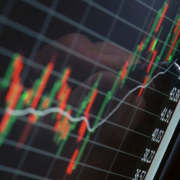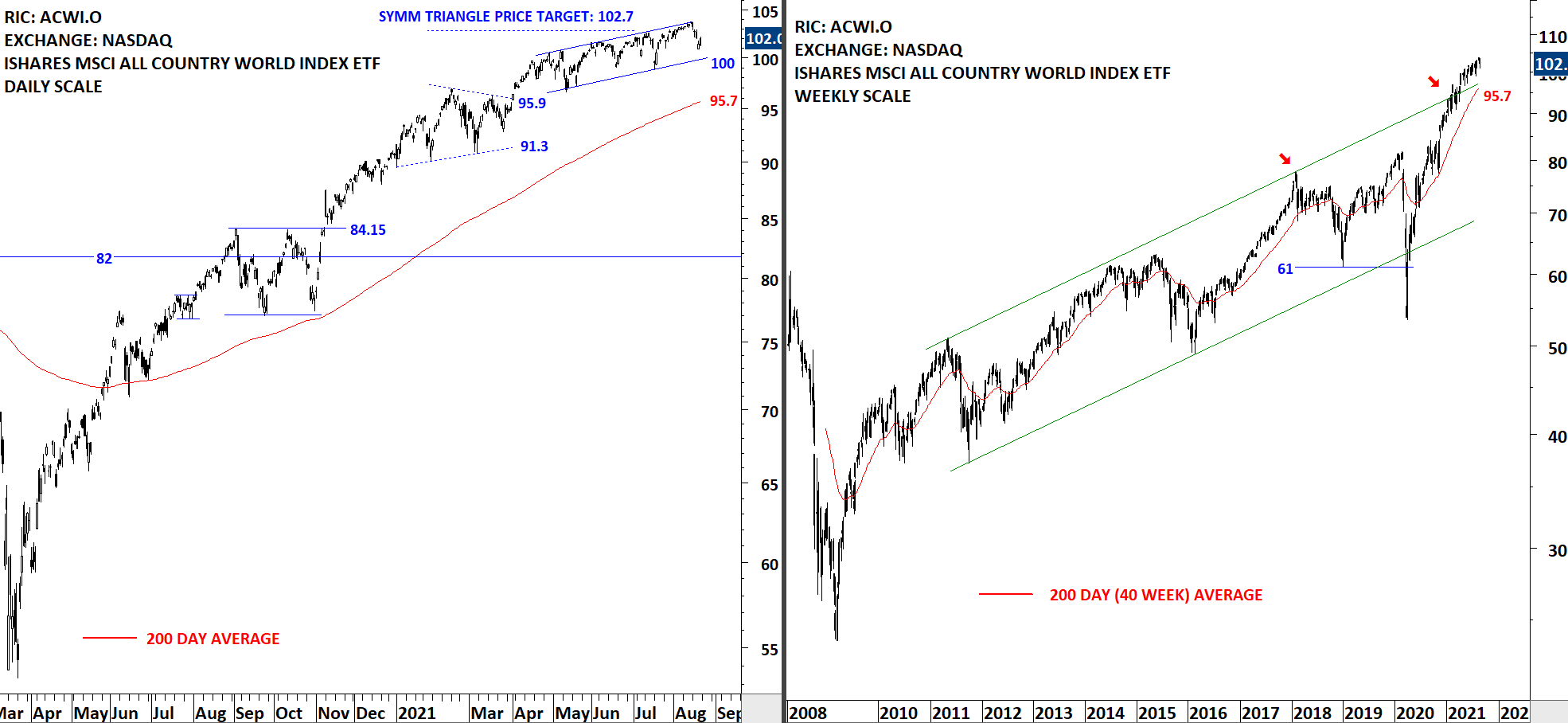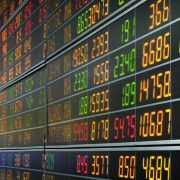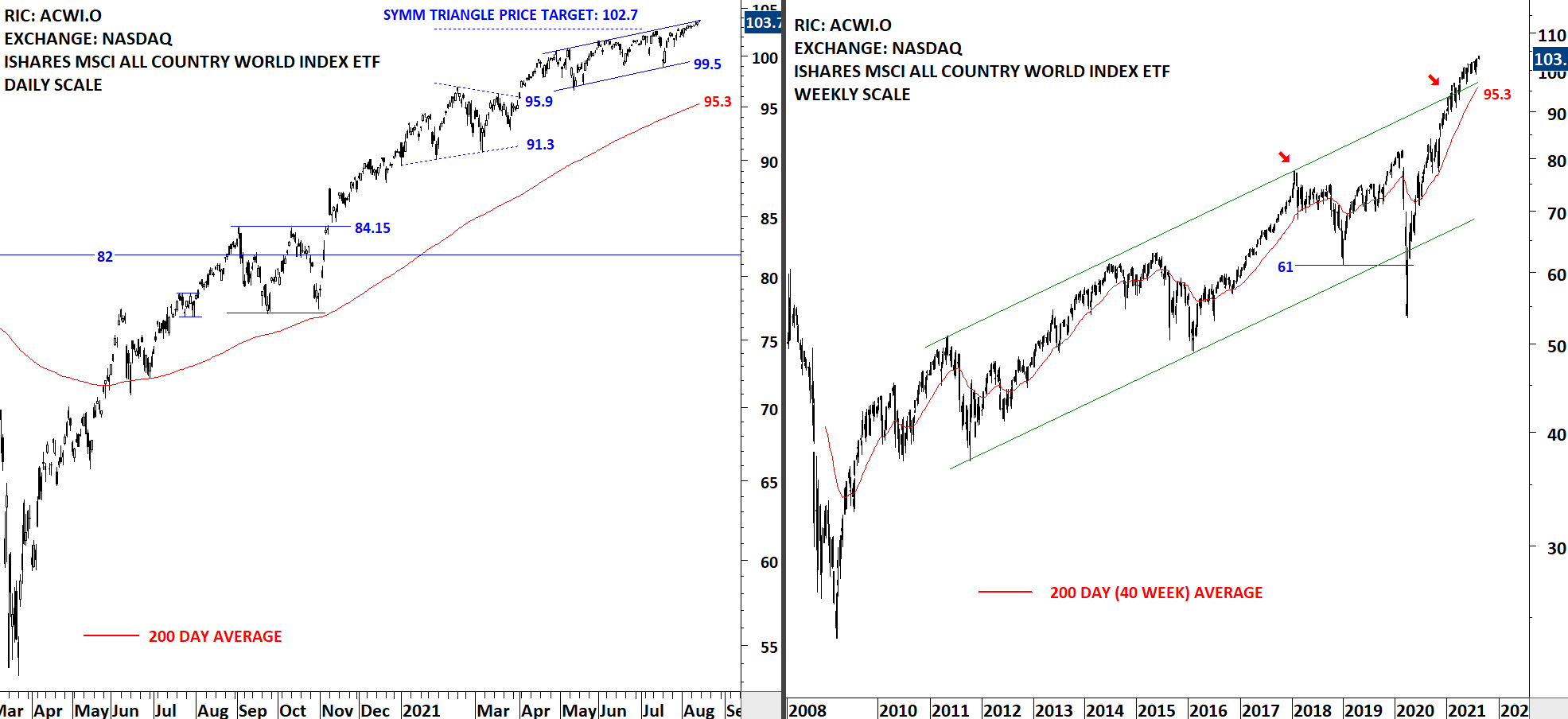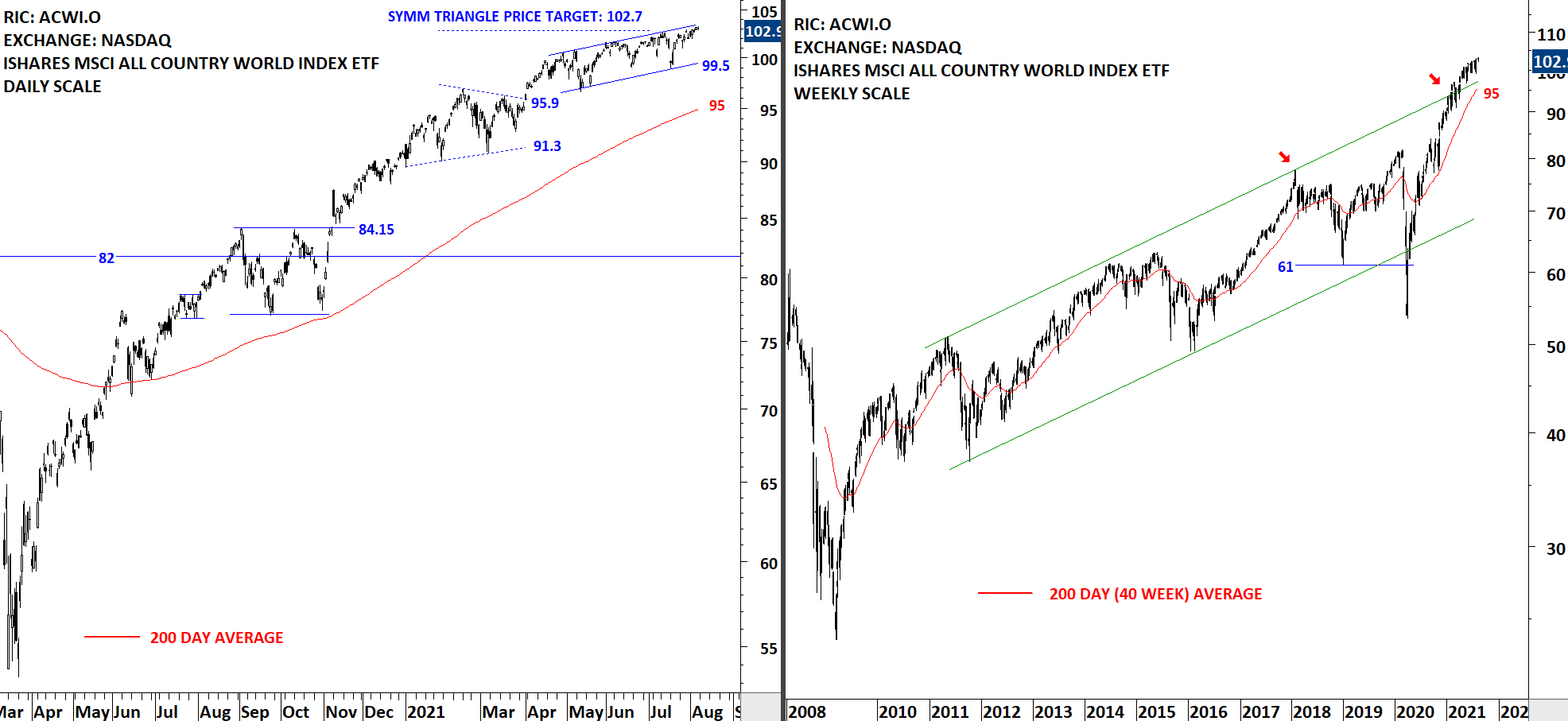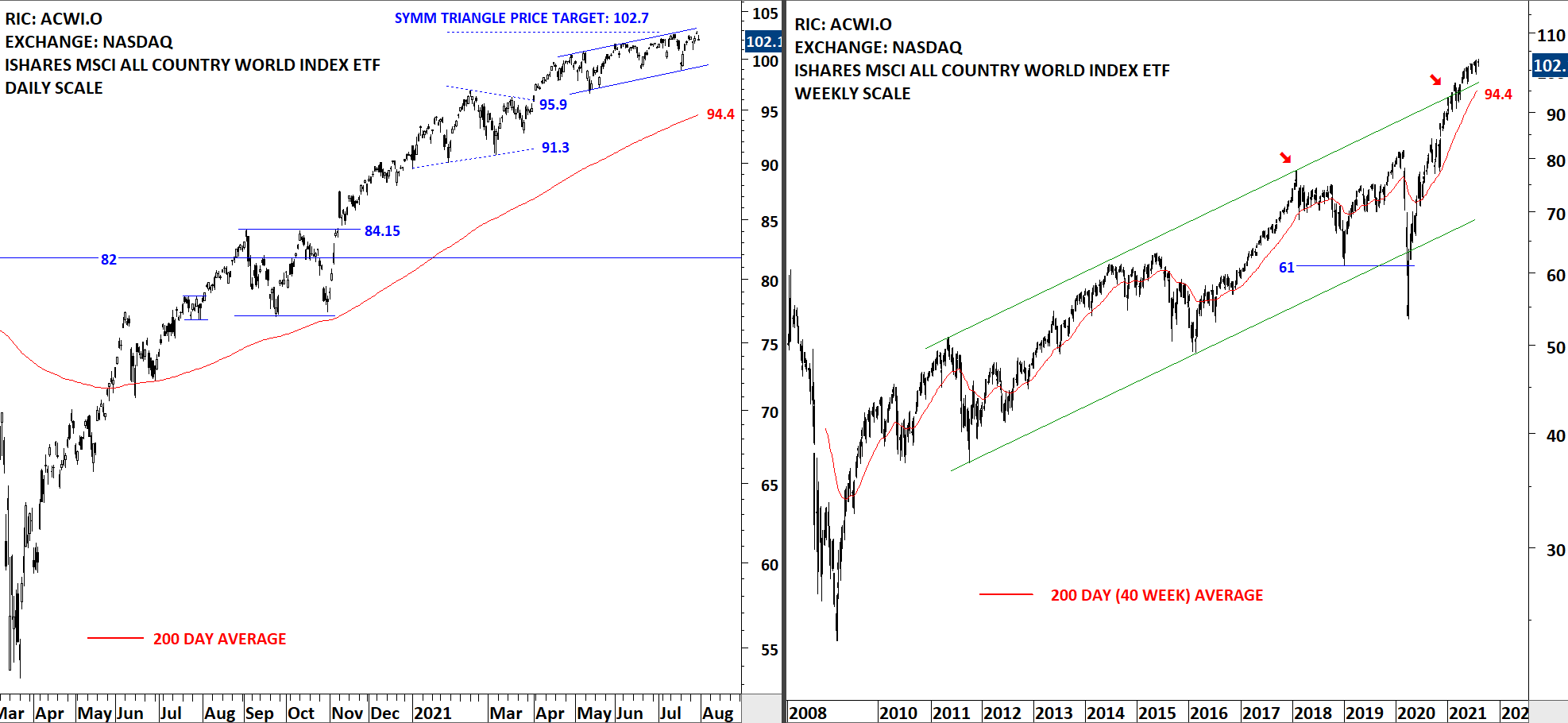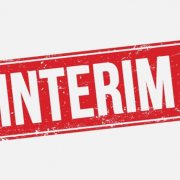GLOBAL EQUITY MARKETS – August 28, 2021
REVIEW
The benchmark for the Global equity markets performance, the iShares MSCI All Country World Index ETF (ACWI.O) is in an upward sloping channel. The lower boundary of the channel is forming support at 100 levels. Support area remains between 95.9 and 100 levels. There is no clear top reversal chart pattern on daily and weekly scale price charts. This week the ETF tested the upper boundary of the trend channel on daily scale price chart. Volatility is low on daily scale and a breakout above the upper boundary can result in acceleration of the uptrend.
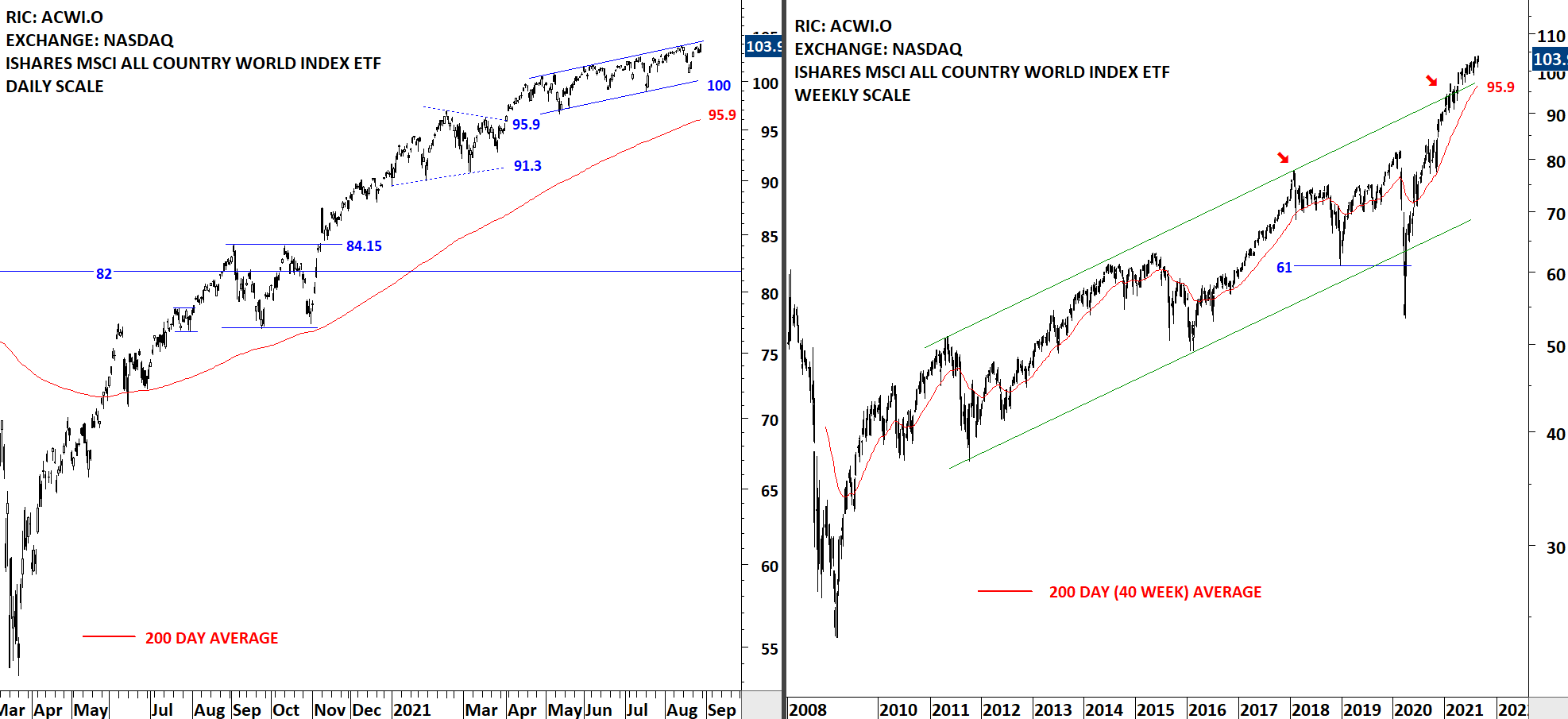 Read More
Read More


